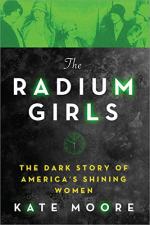
|
| Name: _________________________ | Period: ___________________ |
This quiz consists of 5 multiple choice and 5 short answer questions through Chapters 12-19.
Multiple Choice Questions
1. When Swen Kjaer from the Bureau of Labor Statistics conducted an investigation of Radium Dial's scientific laboratories in 1925, what two safeguards did he find the scientists using in their work with radium?
(a) Lead aprons and safety glasses.
(b) Protective suits and gloves.
(c) Safety glasses and limited working hours.
(d) Lead screens and vacations from work.
2. What amount of money did the first suit filed by a dial-painter request from the United States Radium Corporation?
(a) $75,000.
(b) $90,000.
(c) $50,000.
(d) $30,000.
3. When Cecil K. Drinker found out that the United States Radium Corporation had suppressed his report, he made a deal with Arthur Roeder that he would not publish the report as long as Arthur Roeder immediately took what action?
(a) Sent a full copy of the report to the New York Times for publication.
(b) Paid Cecil K. Drinker $50,000.
(c) Sent a full copy of the report to John Roach.
(d) Instituted a set of safety measures to protect the dial-painters.
4. What color was the mark the scientist found on his skin in 1901 after keeping a piece of radium in his pocket, as described in the book's prologue?
(a) Black.
(b) Green.
(c) Brown.
(d) Red.
5. What adjective did Arthur Roeder use in a letter to Cecil K. Drinker to describe his own response to Cecil K. Drinker's final findings about the United States Radium Corporation?
(a) Angry.
(b) Panicked.
(c) Mystified.
(d) Heartbroken.
Short Answer Questions
1. In what city was the Radium Luminous Materials Corporation located?
2. In what discipline did Cecil K. Drinker work at the time he conducted a study at the United States Radium Corporation?
3. To what position was Katherine Schaub promoted after the term of her apprenticeship?
4. Under state law in the early twentieth century in New Jersey, the Department of Labor had no authority to stop an industrial process even if it was what?
5. What role did Josiah Stryker inhabit within the United States Radium Corporation?
|
This section contains 334 words (approx. 2 pages at 300 words per page) |

|




